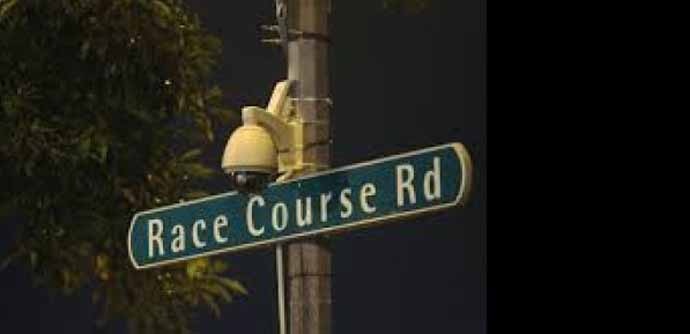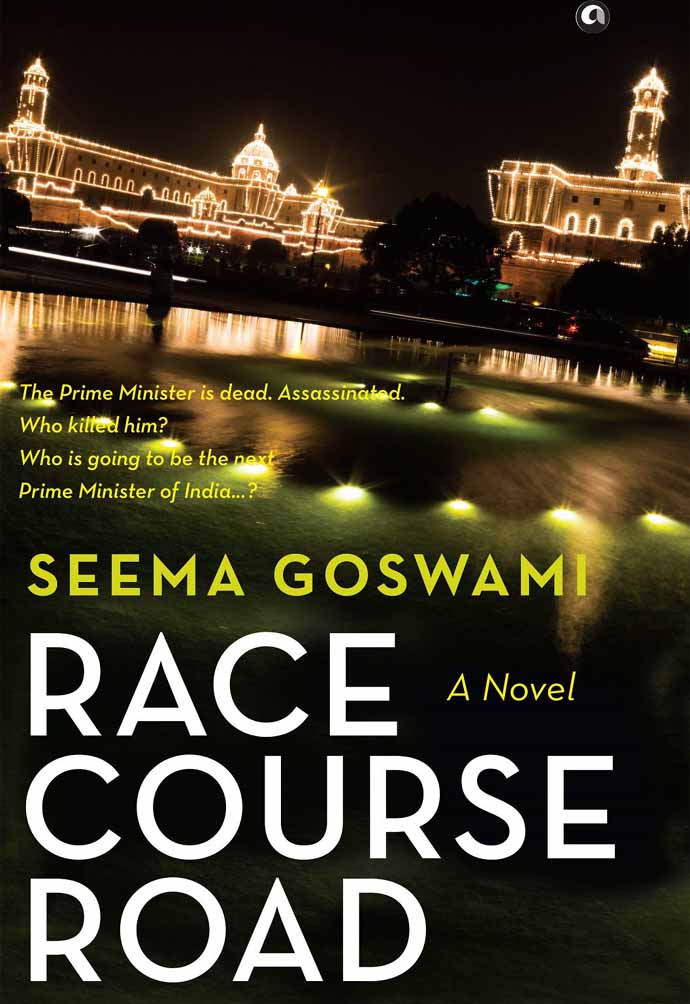What do we know about 7, Race Course Road, India's most 'guarded' address?

When you think about it, there is something strange about the way in which Indians - even aware, educated Indians - regard the prime minister’s residence. We know what the White House looks like. We have all seen photos of that iconic door on Downing Street with "10" written on it. But most of us - well, nearly all of us - have no idea what the Indian prime minister’s house looks like.
Ask Dilliwallas where the PM lives, and about all that most people will be able to say is that his house is on a street that has been blocked off. Even TV channels rarely carry footage of the PM’s house.
It wasn’t always like this, of course. Pandit Jawaharlal Nehru lived at the imposing Teen Murti House, which visitors to Delhi would gawk at in the 1950s and 1960s, while admiring its grand [British] Raj architecture. And we can now go and see where Indira Gandhi lived and worked (and died) because the complex (comprising two bungalows) on Safdarjung Road has become a memorial.
But Race Course Road?
Nothing.

When I started to write my novel, Race Course Road, I fell back on the memories I had of the prime minister’s house. I had been to Number 3, Race Course Road (or RCR in Delhi polispeak) during a previous dispensation when I had been friends with members of a prime minister’s family. It was actually a relatively small (by governmental standards) bungalow. But I was aware that it was only a part of the whole complex.
The rest of RCR was hard to see unless you had special security clearances. We were greeted (and searched) at a reception building manned by the Special Protection Group (SPG), set up in 1985 (after Indira Gandhi’s assassination) to protect the prime minister, and then led to a white ambassador car. This was our "ferry" and the SPG officer who was driving it took us directly to the residence at Number 3. He was not allowed to stop anywhere along the street and nor could we ask to get off till we had reached Number 3. When we left, another ferry took us straight back to reception.

But what was the rest of RCR like? As I researched my book, I spoke to former occupants of the prime minister’s house, to officers who had served on the PM’s staff and to people who had visited the complex often during various regimes. The picture that emerged was a fascinating one.
Rajiv Gandhi chose the two bungalows on Race Course Road that are now at the heart of the prime minister’s house complex after his mother’s assassination. Mrs Gandhi had used one of the Safdarjung Road bungalows as her residence (where Rajiv and Sonia lived with her) and another had become her office.
Rajiv wanted something similar. He chose Number 7, Race Course Road as the PM’s official residence and decided that his family would live at Number 5. He was urged to take a bigger bungalow, but he reckoned that Number 5 was large enough for him, Sonia, and their two young children.
Number 7 was where the PM met visitors, held mini-cabinet meetings (he had another office and a full-fledged Cabinet Room at South Block) and received some visiting heads of state. His private secretary, Vincent George, sat in a little room at the front of the house.
Number 5 was Sonia’s domain. Rarely, if ever, were politicians invited to that house and it was treated as family territory. Arun Singh, Rajiv’s closest aide in the early years of his prime ministership, moved into Number 3 and the joke was that Sonia and her children had more to do with Number 3 than with the official residence at Number 7.
So close were the Singhs and the Gandhis that their gardens were connected by a gate that allowed them to come and go as they pleased, bypassing the SPG security on the road. (Later, when they fell out, that gate was shut and eventually Arun Singh resigned and moved out.)
During VP Singh’s brief prime ministership, the two RCR bungalows remained largely as the Gandhis had left them. Chandra Shekhar, who succeeded VP Singh, was reluctant to even shift to Number 5, arguing (correctly as it turned out) that he would not stay prime minister for very long.
The process of creating the RCR complex we know today really began with Narasimha Rao. He refused to move into Number 5 either because (the official story) he had too much respect for the recently slain Rajiv to sleep in his old bungalow or (the unofficial story) because Chandraswami, the so-called Rasputin of the regime, told him it was unlucky for its occupants.
So the prime minister’s house complex was extended to include Number 3, which is where Rao finally chose to stay. Number 5 became a guesthouse for Rao’s family and legend has it, was frequently handed over to Chandraswami to conduct havans for Rao’s continuance as prime minister (It worked. Rao completed his full-term despite early skepticism about his longevity in office.)
It was during Rao’s time that the SPG, now totally paranoid about security after Rajiv’s assassination, decided that the Indian prime minster would not just have a house, he would have a whole road.
Number 9 (where the SPG already had an office) and Number 1 were also taken over (this part of Race Course Road only has odd-numbered bungalows) and the entire street was shut off from prying eyes. Only a few people (Chandraswami among them) could drive their cars into the complex. The rest had to use the SPG’s ferries.
The media were not allowed into the complex and had to watch from across the road. So, most people in the press missed the comings and goings, including the famous occasion when Harshad Mehta, then the king of Dalal Street arrived with a suitcase of cash (around a crore of rupees according to Mehta), put it through the SPG’s security scanner, got into a ferry and delivered the money to Number 7. It was under Rao that a system of “green channel entry” was devised. If the PM wished, the SPG would allow visitors in without giving them visitors’ slips or maintaining any record of their visit.
From that point on, Race Course Road became, in the public imagination, no more than the place behind the fence. TV crews would be allowed to shoot telephoto footage of ministers getting into their parked cars as they exited the SPG’s ferries. But that was about it.
Other prime ministers came and went. HD Deve Gowda and IK Gujral did nothing to change the structure, though Gujral was probably the first prime minister to invite political friends (and some editors) to Number 3 as part of his traditional Punjabi hospitality.
When Atal Bihari Vajpayee became the prime minister and it looked as if India finally had a PM who would last longer than Deve Gowda and Gujaral had, the prime mnister's house complex expanded. A helipad was built at Number 1. A new building, called Panchvati, came up near the reception. This boasted of an auditorium-cum-cinema and a conference room. The SPG had begun to get uneasy about the prime minister’s willingness to attend functions. So the auditorium was the solution: the functions would come to RCR.
Not that much changed during the decade of Manmohan Singh’s prime ministership except that the new PM and his wife, Gursharan Kaur, spent several weeks renovating Number 3, a move that was at odds with Singh’s normal spartan, never-complain style.
Later during UPA 2, Number 3 became a meeting place for the PM’s confidants to confer with his family leading to jokes about how the Congress core group met Manmohan Singh at Number 7 while the Kaur group met at Number 3.

It is a measure of how private Narendra Modi is that while visitors will tell you about Panchvati and Number 7, hardly anyone knows anything about his living arrangements.
Though my book is entirely fictional, I was still keen to know how RCR - or Lok Kalyan Marg, as the Modi dispensation has renamed it - is organised these days. But most times I drew a blank. Even ministers did not seem to know whether Modi lived at Number 3 or Number 5.
Eventually I discovered that he had broken with tradition and moved to the bungalow that Rajiv and Sonia had once chosen as their home: Number 5.
Perhaps it is a good thing that prime minister's residence has now increasingly disappeared from view and that the action has shifted to the Prime Minister’sOffice (PMO) in South Block. On the other hand, perhaps South Block is where they want us to look. The real decisions may still be made at 7, RCR.
Whether you treat it as a house or (accurately) as a whole road, Race Course Road is still the enigmatic address at the centre of Indian politics.

